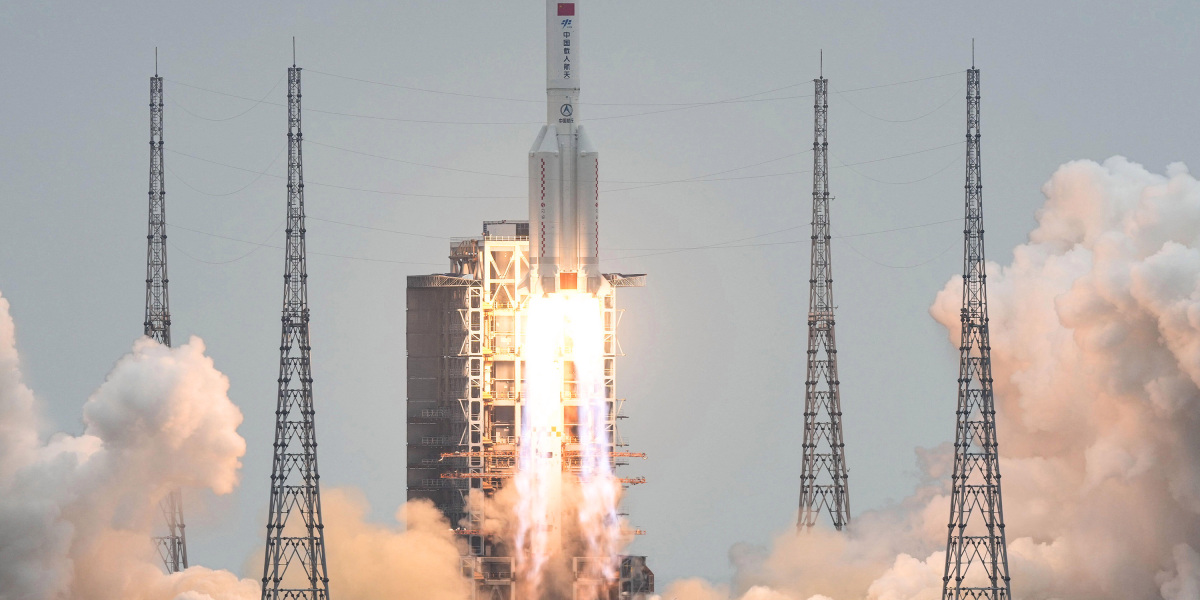
The Tianhe-1 module that launched this week is the core of what is supposed to be a three-part space station. On the surface, it seems to pale in comparison to the 22-year-old ISS. The ISS is a football-field-size behemoth weighing about 420 metric tons, while the much smaller T-shaped Chinese Space Station (CSS) will be a mere 80 to 100 tons, closer to the size and mass of Russia’s former Mir station. The Tianhe-1 module is just 22 tons and 16.6 meters long. And after 12 missions this year and next to put the whole thing together, the completed station will still be roughly half the length of the ISS.
China seems fine with that. “We did not intend to compete with the ISS in terms of scale,” Gu Yidong, chief scientist of China’s human exploration program, told Scientific American.
And it doesn’t mean the station won’t boast some useful space capabilities. Tianhe will be the primary living quarters for any astronauts on board, and the next two segments, Wentian and Mengtian, will support an array of scientific experiments taking advantage of the station’s microgravity. They may investigate the study of fluid dynamics and phase changes, for example, or the growth and evolution of organisms.
There will be 14 refrigerator-sized experiment racks inside the station, and another 50 docking points for experiments that can be mounted outside to expose materials to the vacuum of space. China has already reached out to international partners to solicit experiments. Five docking ports and a host of robotic arms will ensure safe visits from other spacecraft and set up the possibility of expanding the station itself.
Perhaps most exciting, the station will play an important role in helping China deploy and operate a brand-new space telescope, Xuntian, meant to rival NASA’s aging Hubble Space Telescope, with a field of view 300 times larger and a similar resolution. It will make observations in ultraviolet and visible light, running investigations related to dark matter and dark energy, cosmology, galactic evolution, and the detection of nearby objects. Scheduled to launch in 2024, Xuntian will be able to dock with the CSS for easy repairs and maintenance.
Furthermore, the station can act as a platform for testing technologies that will be critical for sustaining a long-term presence on the moon and Mars one day. These include habitation and life support systems, solar power, and shielding from radiation and micrometeorite impacts.
All this is neat, but as Cornell University’s Lincoln Hines points out, the station’s true goal seems to be prestige—to position China as part of an exclusive club of space powers that operate a permanent outpost in orbit, boosting nationalist support within its borders. “I’ve no doubt there are people in China’s scientific community that are genuinely excited about what they could do through the CSS,” says Hines. “But from the perspective of the central government to support this grand, ambitious project, it’s a really strong symbol that lets China tell its population, ‘We’re technologically powerful and can compete with the United States.’”
And it also puts China closer to competing with the US in “soft power.” The US is the primary funder of the ISS, an extraordinarily costly public good that benefits the rest of the world. It helps accomplish some interesting science and tech experiments, but the station’s biggest impact has arguably come from its status as a beacon of international cooperation.
We can expect the CSS to provide the same kind of diplomatic benefit for China by helping strengthen the country’s ties with other nations—especially at a time when the country is facing pretty fierce scrutiny for human rights abuses against Uyghurs, political dissidents, and activists in Hong Kong’s democracy movement.
“China’s effort is new and vibrant,” says Goswami, while the future of the ISS is murky. “It signals to the world that China is openly contesting the US for space leadership across the board, and that it is a capable partner.”
Even if these potential benefits are never realized, it may not make much of a difference to China. Unlike US public officials, the Chinese Communist Party doesn’t have to justify its expense sheet to its citizens.
“From my perspective, the Chinese government’s number one goal is its own survival,” says Hines. “And so these projects are very much aligned with those domestic interests, even if they don’t make a ton of sense in broader geopolitical considerations or have much in the way of scientific contributions.”







